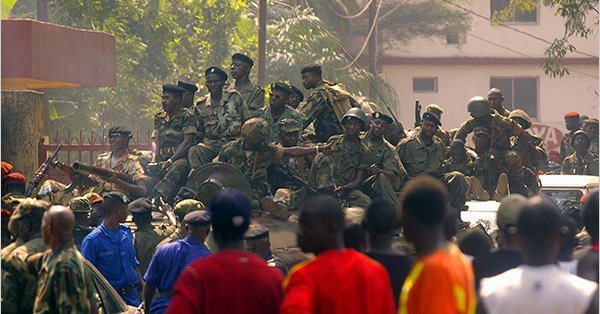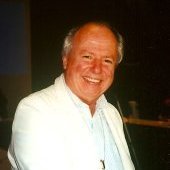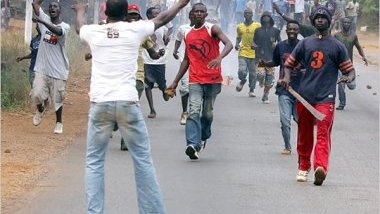Thus the UN Human Rights Council passed the issue over to the African Union, which issued a statement deploring the violence and then passed the issue on to the 16-member regional body — the Economic Community of West African States (ECOWAS). The President of Nigeria, currently holding the rotating chairmanship of ECOWAS, appointed Blaise Compaoré, the President of Burkina Faso, as mediator. Compaoré flew to Conakry for a short visit after which nothing was heard publicly of his efforts. The UN and its human rights secretariat seemed “out of the picture”.
However, the very complexity of the UN system as well as its extraordinary diversity and often apparent lack of coherence is what makes the system flexible enough to function. Teilhard de Chardin used the simple but telling phrase “unity differentiates” in the sense that elements do not lose their separate identity when brought together in biological unity: rather their differences are accentuated. His observation has a similar validity when applied to the systemic behaviour of the members of the UN family.
Under Dag Hammarskjold in a highly innovative period, it was possible to introduce effective and quite far-reaching changes that cleared the decks for new bodies that were then created and which for the most part have retained their original vision and vigour. He saw his role as Secretary-General as a purposive one, identifying and pursuing the long-term interests of the world community. His authority was derived from the Charter. He acknowledged that this could very readily result in a run-in with the short-term interests of individual members but that there could also be times of cooperation with individual States which would advance the rule of law and justice.
This cooperation between an individual State and the Secretary General is what brought the United Nations to center stage in the case of the Guinea slaughter. Bernard Kouchner, the French Foreign Minister, has a long-standing interest in Africa dating from his medical work with the Red Cross during the Nigeria-Biafra war. He reacted to the 28 September attacks on the protesters in Conakry and urged the UN Secretary-General Ban Ki-moon to create a fact-finding group. Earlier, Ban Ki-moon had created a fact-finding group to look into the situation in the eastern provinces of the Democratic Republic of Congo where there is a large UN peace-keeping force.
Ban Ki-moon, with a much “lower profile” than that of Dag Hammarskjold, has been innovating with UN fact-finding missions. There is a growing understanding of the need for fact-finding. Already at the end of 1991, the UN General Assembly passed a resolution (A/RES/46/59) on the policy of fact-finding which it defines as “any activity directed at a detailed knowledge of the relevant facts of any dispute or situation which the competent United Nations bodies need to efficiently carry out their work in international peace-keeping and security… The Secretary-General should make full use of the information-gathering capabilities of the Secretariat and keep under review the improvement of these capabilities.”
The impact of the Report on the Fact-Finding Mission of the Conflict in Gaza led by Justice Richard Goldstone with three other experienced members is an indication of the new importance within the UN of fact-finding. In the case of Guinea, there was less emphasis on the personality of the three fact-finders and fortunately more on the content of the report which was obtained by the French newspaper Le Monde and then by the press agency Reuters.
The UN fact-finders interviewed over 600 persons who confirmed what had already been published by non-governmental human rights organizations. The UN report stressed that the killings and rapes were “systematic” and “organized”. The report said that the protesters had been fired on without warning, stabbed, bayoneted or beaten to death by the elite army unit using boards with nails driven through them. The fact-finders cited 156 known victims but said that the actual number was “very probably higher.” At least 109 women were subjected to rape, and some were held in army camps and officers’ houses where they were repeatedly raped.
All the facts contradicted the government’s claim that the shootings were unplanned and due to military indiscipline. The report said that the use of deadly weapons fired without warning at unarmed civilians and the fact that security forces had fired at vital body parts showed a “premeditated intention to cause a maximum of victims.”
The situation in Guinea has been made more complex by the fact that the President, Captain Moussa Dadis Camara was wounded in the head by an assassination attempt carried out on 3 December by a close companion, Lt. Aboubacar Diakité, who was not arrested but fled from Conakry. President Camara is now in a hospital in Rabat, Morocco. It is likely that Camara will stay on in Morocco and his place as Head of State taken over by other military. Camara was not a particularly strong leader, but the military wanted “one of its own” to hold the top post. The UN report mentions other officers, including Lt. Diakité, involved in ordering the shooting. The information is likely to be given to the investigators of the International Criminal Court who are already working on the case.
The growth of UN fact-finding is in keeping with the fact-finding and analysis of non-governmental organizations such as Amnesty International, Human Rights Watch and the International Crisis Group. In addition, humanitarian aid organizations which in the past were reluctant to make political comments now are increasingly willing to point out that where there are victims there are also culprits. These are those responsible for the savagery which is unleashed. With the slaughter in Guinea, the fact-finding efforts tighten the noose.



Follow the comments: |
|
